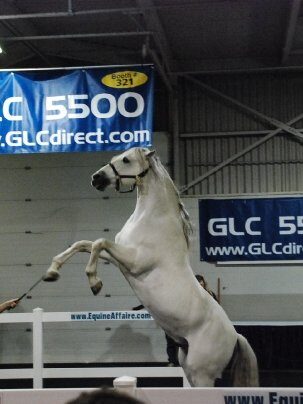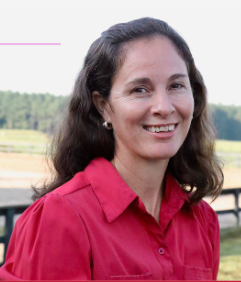rlstew2
-

By: Robyn Stewart, M.S. Reviewed & Approved by Dr. Kylee Duberstein, UGA Assistant Professor When it comes to equine behavior, there are a wide variety of topics we could discuss. The 2024 Equine Exchange Lunch and Learn taught a year-long curriculum on equine Behavior and Training, with the full playlist of recordings available here: https://kaltura.uga.edu/playlist/dedicated/1_15kqhbaq/.…
-

by Brenda Jackson, UGA Extension, Murray County and Dr. Kylee Jo Duberstein, Professor, Equine Science, Department of Animal and Dairy Science Laminitis and founder are often used interchangeably in regards to issues with the hoof but subtle differences exist between these two terms. Laminitis specifically refers to inflammation of the laminae of the foot and…
-

Patterns are a vital part of numerous riding and in-hand classes, but they can often be more intricate than they appear at first glance. Understanding patterns can be a fun activitiy that fills club meetings during those rainy days. Break the meeting into three parts. Start by introducing patterns and the symbols you will be…
Posted in: Vol. 9 | Winter 2023 -

The saddle pad is the important piece of tack and comes in contact with the horses skin the most. They must be kept clean and soft to prevent rubs or saddle sores. Keeping your saddle pad clean will protect your investment and prolong the life of the pad. Never use a high powered pressure washer…
Posted in: Vol. 9 | Winter 2023 -

Brief Bio: Kylee Jo Duberstein was born in Missouri, but grew up in Gainesville, FL on a small horse farm where she competed jumping horses at a national level for over 15 years. She showed at the Grand Prix level for over 10 years and has won 4 USEF national standard Grand Prix events, as…
Posted in: Vol. 9 | Winter 2023 -

Structure of Arena Surfaces The footing is comprised of the following three layers (Figure below). Top: The actual riding surface. This layer is lighter, less compact, and can be composed of many different primary components and additive combinations. Depending on use, this layer is often two to six inches thick. Base: The solid, compacted layer…
Posted in: Vol. 9 | Winter 2023 -

Hyperkalemic periodic paralysis (HYPP), glycogen branching enzyme deficiency (GBED), hereditary equine regional dermal asthenia (HERDA), malignant hyperthermia (MH), polysaccharide storage myopathy type 1 (PSSM1) … These are some intimidating words that horse owners are likely to come across at some point or another, especially if breeding is on the yearly agenda. So, what exactly do…
Posted in: Vol. 9 | Winter 2023 -

When examining horses for conformation, either when considering a purchase or competing in horse judging contests, it is important to break things down into key principles to avoid becoming overwhelmed when putting the overall picture together. There are five main criteria to evaluate when examining a horse’s conformation: balance, structural correctness, way of going, muscling,…
Posted in: Vol. 9 | Winter 2023 -

I bet while you are cleaning your stalls, you didn’t think of yourself as a manure manager, did you? The average stalled horse can produce 50 lbs. of manure per day and that doesn’t even include the bedding material, whether it be shavings or straw. Taking that into consideration, add another 10-20 lbs., giving a…
Posted in: Vol. 9 | Winter 2023 -

Bit selection is a critical area of consideration for riders of all disciplines and levels. Bit selection is often regulated by various breed and/or horse show associations. For many horse enthusiasts lack of knowledge about bit types and functions as well as common misconceptions held in the horse industry, can make choosing an appropriate bit…
Posted in: Vol. 8 | Winter 2023